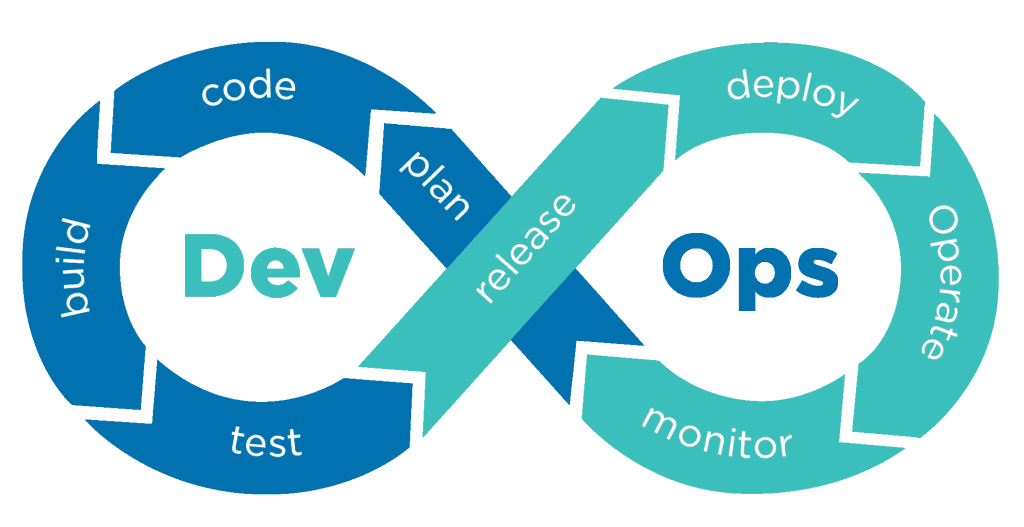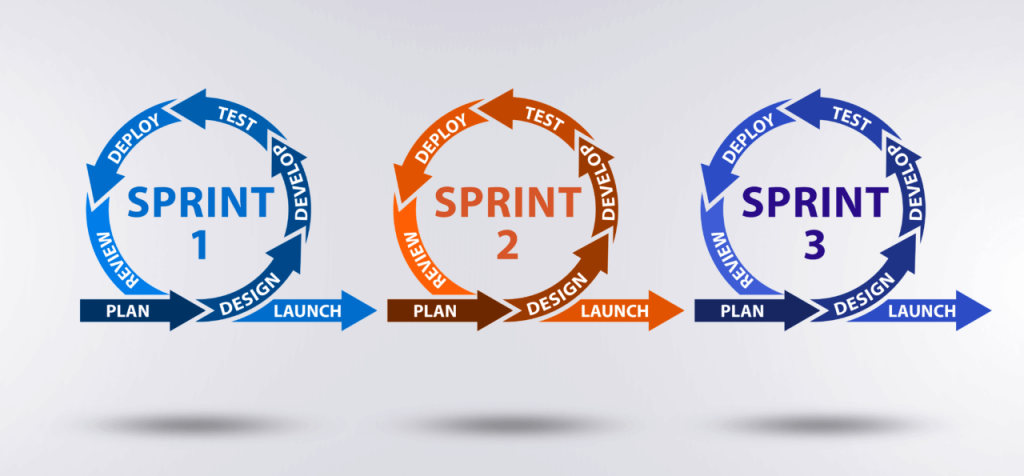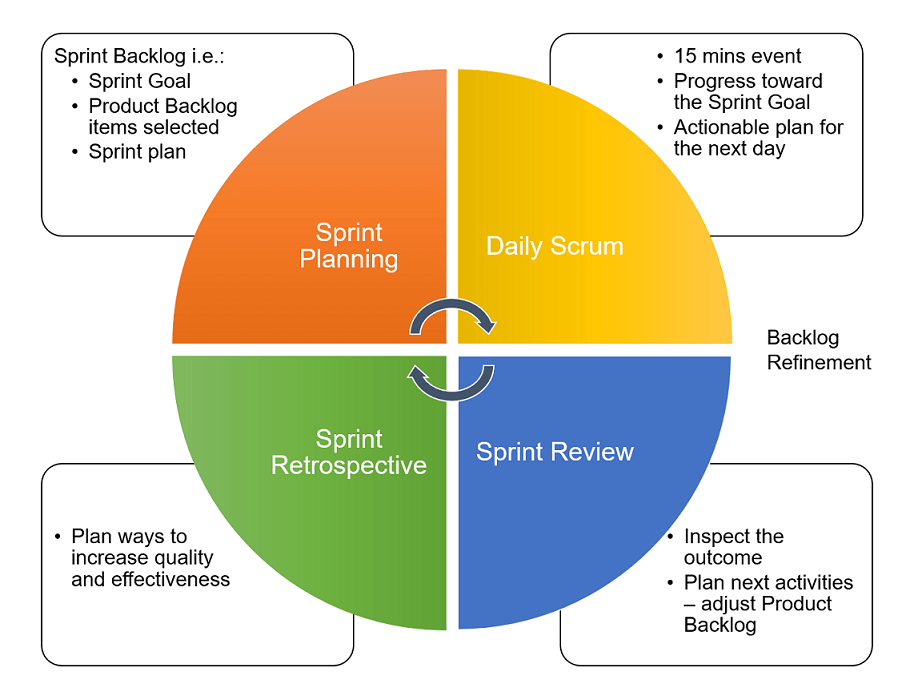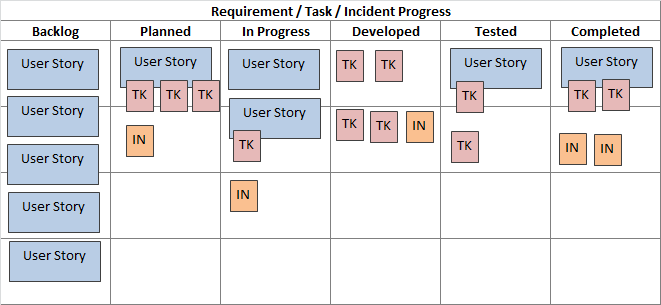Software Development Methodologies: A Comprehensive Guide

- What is a software development methodology, and what does it include?
- What are alternative software development methodologies used today?
- DevOps Methodology
- Agile Methodology
- Waterfall Development Methodology
- Scrum
- Kanban
- Lean Software Development Methodology
- Rapid Application Development
- Alternative software development models comparison
- A checklist for selecting the optimal SDM
- Alternative software development models comparison
- Final thoughts
Proper management will help your team run projects of any complexity seamlessly. Software development methodologies (SDM) include the sets of techniques and approaches to organize an optimal project flow and bring your project management to a new level. However, before implementing any of the alternative software development models, you should understand the basic principles of each.
So, what are the different types of software development methodologies, and how to identify the right one for your task? The article covers a range of common SDMs, their pros and cons, and the guidelines for making the proper choice.
What is a software development methodology, and what does it include?
An SDM comprises several steps:
- Planning,
- Structuring,
- Performance assessment.
The ultimate purpose of any SDM is to streamline the software development process. Generally, software development methodologies do not involve the technical aspects of software engineering. They target internal workflows and other operations related to the project.
What are alternative software development methodologies used today?
According to recent research, DevOps is the most pervasive method implemented by almost 47% of respondents in 2022. The reasons for choosing this approach include faster time to market, high code quality, and more efficient collaboration among developers.

To help you figure out which software development approach suits your organization best, we have collected a list of the most popular types of software development methodologies.
DevOps Methodology

Much more than a mere methodology, DevOps also includes a range of practices supporting organizational culture. The approach focuses on enhancing collaboration among the departments responsible for various stages of the development process. Thus, the areas you need to cover include:
- Development phase,
- Internal operations,
- Quality assurance.
The method also implies consistency in task delegation between the teams involved.
Agile Methodology

This model denotes a disciplined software management process, giving room for frequent project changes. With this approach, developers design a conceptual framework instead of a rigid one. They develop software in iterations with the opportunity to add some new functionality at each.
Agile software development methodologies aim to counter risks, including the following:
- Bugs,
- Excessive expenses,
- Unforeseen changes in software requirements.
Coreteka team applies agile methodology since it allows for attaining the necessary degree of flexibility in the delivery process.
Waterfall Development Methodology

This strategy implies a rigid linear framework consisting of sequential stages focusing on specific goals. The stages include
- Requirements
- Design
- Implementation
- Verification
- Maintenance
When applying this method, make sure that your team follows the major principles and fine-tunes every detail. Otherwise, it can be challenging to go back and revise the entire process.
The main difference between Agile and Waterfall software development methodologies lies in the working system. While Waterfall is a linear approach, Agile encourages the team to handle different phases simultaneously.
Scrum

Scrum goes hand-by-hand with agile development as it focuses on implementing the agile approach. The scrum system utilizes various software projects to simplify the process.
The methodology comprises the following values:
- Transparency: maximum visibility into the organizational goals.
- Inspection: alignment of every process with the company requirements.
- Adaptation: immediate reaction to changing conditions.
Kanban

Kanban accompanies an agile framework in its effort to enhance efficiency and collaboration. Although it lacks predefined roles, it enables greater flexibility in terms of task management.
Its general principles include
- Workflow visualization: the board displays every team member’s daily tasks.
- Workload optimization: it ensures that teams are dealing with only a few things at a time.
- Streamlining workflows: easy and smooth transition to the next steps once the previous tasks have been completed.
Lean Software Development Methodology

This methodology focuses on the improvement of quality and productivity. Here, the team determines the most appropriate solution through regular assessments to streamline the process.
The approach is based on the following pillars:
- Establish clear objectives to find the right solutions.
- Minimize wastage to enhance operational efficiency.
- Maintain consistency by continually analyzing performance.
- Exercise transparency by ensuring real-time data access.
Rapid Application Development

This methodology is a high-speed adaptation of the Waterfall model. However, in this case, you should build your process based on distinct variables.
- Requirements collecting
- User design
- Construction
- Cutover
The team builds a platform based on the users’ responses to each activity. The primary goal of the method is to bring the best result in the quickest manner.
Alternative software development models comparison
The table below provides a brief snapshot of each methodology’s pros and cons.
| Methodology | Pros | Cons |
| Agile | Adaptivity: you can address any changes the customer needs.No guesswork: you attain clarity in every detail.Predictable schedules and costs: you can assess the scope of work and costs more efficiently. Focus on the business value: you can shift your attention to the vital aspects of the business. Focus on users: users can monitor and choose project features. | More time and involvement: your team needs continual interactions to guarantee the project matches the requirements.Insufficient documentation: you may need to include additional steps to document the details appropriately. |
| Waterfall | Clear structure: the need to complete every step makes identifying possible errors easier.Manageability: you can optimize procedures and make necessary adjustments along the way.Accurate goals: you can set clear and specific overall project goals.High visibility: the working process is transparent for both parties.Minimized issues: the method includes quality assurance tests at each stage.Consistency: a systematic approach enables a reliable transfer of information from one stage to another. | Low adaptability to changes: you cannot backtrack to changing requirements.A lack of client and user involvement: the approach focuses on the internal process without the active participation of the client or user.Inappropriate for complex projects. |
| Lean | Minimum resource wastage: you can optimize the software development process and save resources.A better understanding of the clients’ needs: you can assess customer behavior, identify issues, and convert insights into actionable practices.The opportunity to expedite the learning curve: you get more time to facilitate other operational processes. | Process execution requires a skilled workforce. Robust documentation requirements: you may need to delegate the documentation procedures.Insufficient precision: you have to ensure meticulous progress monitoring to attain a successful result. |
| Rapid | Prompt results: you can create a time-sensitive application development platform.Customer involvement: each party can provide feedback in real time.Minimum risks and efforts from the engineers’ side. | High dependence on personal skills and team’s performance. The method is not appropriate for complex systems. Higher costs compared to other methods. |
| DevOps | Reduced human error.Easy tracking of the tasks’ delegation to each department or individual.Higher unification and standardization of processes.Minimum resource wastage in analytics, cloud infrastructure, and data management.Enhanced customer experience thanks to high-quality systems.Greater transparency within the development and operational teams | The complexity of transition: to implement the system, you may need to restructure your team, internal processes, and applications.Lack of talent: experienced DevOps engineers are hard to find since the methodology is relatively new. You can face issues in determining the right tool in this context. |
| Scrum | High user involvement: user feedback is easy to turn into actionable and testable modifications.Flexibility: you have plenty of room to adapt to changing requirements. Motivation to the team: by committing to the pillars, the members become better involved in achieving the company’s business goals.Minimized resource wastage: the developers can focus on providing functional and tangible features. | The method requires extensive expertise. The absence of hard deadlines: you can find it challenging to get continual progress updates.Poor capacity in terms of slow-moving projects.The lack of end-to-end project visibility. It can be difficult to assess the resources. |
| Kanban | The opportunity to address resource and time shortages by using the Kanban Board.Quick and continuous delivery.High versatility: you have more room for executing changes.Simplified user experience: Kanban is easy to use and navigate. | The continuous approach leads to excessive tasks, which can cause bottlenecks. The system lacks timeframes making it challenging to set delivery timelines. The Kanban board requires frequent monitoring and updates. Complexity in implementation, especially in large companies. |
A checklist for selecting the optimal SDM
Once you have learned the different software development methodologies, it’s time to figure out how to select the one for your team. We have worked out a brief checklist to go through
- Ensure that the methodology meets your team’s and your client’s goals. Nevertheless, it should allow for certain adjustments throughout the process.
- Focus on your development environment rather than on the particular method. If your team lacks the necessary skills to implement DevOps methodology, you should better choose another approach.
- Consider the scope of your project. For smaller tasks, a throw-away approach may suit when you complete the development stage in a short term and perform re-evaluations over time. Larger projects can benefit from a feature-driven development that enables scalability and usability in the long term.
- Make sure your team understands the selected methodology and is properly prepared to apply it consistently.
- Remember to check if your existing environment is ready to support a tool or framework you’ve chosen to implement.
- Whatever methodology you select, it may sustain changes throughout the project development.

Frequently asked questions about SDMs
The seven advanced software development methodologies include Agile, Waterfall, Rapid, Lean, DevOps, Scrum, and Kanban.
There are numerous alternative software development methodologies if Agile has not satisfied your business goals. As opposed to Agile, Waterfall is a linear approach comprising sequential stages of the project’s progress. Other than Waterfall, you may consider Rapid, Lean, and DevOps methods.
As a rule, Agile and Waterfall head the lists of the most popular software development methodologies because of their convincing advantages. However, depending on the scope of your project, its time frame, and its goals, you can also consider Rapid, Lean, DevOps, or other approaches.
Final thoughts
Now you are familiar with the seven most pervasive software development methods. Each has its upsides and downsides and performs efficiently in various scenarios. The proposed checklist will help you gauge your options and choose wisely.
However, you can always apply an alternative approach and outsource your project. A trustworthy partner like Coreteka will help you put all the software development hassle off your shoulders. Preserve your peace of mind and let our team care for your project’s success.

 Category:
Category:  Tags:
Tags: 

